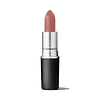What's inside
What's inside
 Key Ingredients
Key Ingredients

 Benefits
Benefits

 Concerns
Concerns

 Ingredients Side-by-side
Ingredients Side-by-side

Dimethicone
EmollientIsoeicosane
EmollientKaolin
AbrasiveCeresin
Emulsion StabilisingParaffin
PerfumingIsononyl Isononanoate
EmollientMicrocrystalline Wax
Emulsion StabilisingSilica
AbrasiveCaprylic/Capric Triglyceride
MaskingCopernicia Cerifera Wax
Hydrogenated Polyisobutene
EmollientVanillin
MaskingTocopherol
AntioxidantGlyceryl Linoleate
EmollientGlyceryl Linolenate
EmollientPvp
Emulsion StabilisingMethicone
EmollientTriethoxycaprylylsilane
Mica
Cosmetic ColorantCI 77891
Cosmetic ColorantIron Oxides
CI 42090
Cosmetic ColorantCI 77163
Cosmetic ColorantCI 75470
Cosmetic ColorantCI 45370
Cosmetic ColorantCI 15850
Cosmetic ColorantCI 45410
Cosmetic ColorantCI 73360
Cosmetic ColorantCI 17200
Cosmetic ColorantCI 19140
Cosmetic ColorantCI 15985
Cosmetic ColorantCI 47005
Cosmetic ColorantDimethicone, Isoeicosane, Kaolin, Ceresin, Paraffin, Isononyl Isononanoate, Microcrystalline Wax, Silica, Caprylic/Capric Triglyceride, Copernicia Cerifera Wax, Hydrogenated Polyisobutene, Vanillin, Tocopherol, Glyceryl Linoleate, Glyceryl Linolenate, Pvp, Methicone, Triethoxycaprylylsilane, Mica, CI 77891, Iron Oxides, CI 42090, CI 77163, CI 75470, CI 45370, CI 15850, CI 45410, CI 73360, CI 17200, CI 19140, CI 15985, CI 47005
Isododecane
EmollientTrimethylsiloxysilicate
EmollientCyclopentasiloxane
EmollientDimethicone
EmollientKaolin
AbrasiveSynthetic Beeswax
Emulsion StabilisingHydrogenated Polyisobutene
EmollientSilica Dimethyl Silylate
EmollientDisteardimonium Hectorite
StabilisingTocopheryl Acetate
AntioxidantHydrogen Dimethicone
Propylene Carbonate
SolventEthylhexyl Methoxycinnamate
UV AbsorberEthylhexylglycerin
Skin ConditioningCaprylyl Glycol
EmollientHexylene Glycol
EmulsifyingPhenoxyethanol
PreservativeTitanium Dioxide
Cosmetic ColorantCI 15850
Cosmetic ColorantCI 73360
Cosmetic ColorantYellow 11
Cosmetic ColorantBlue 1 Lake
Cosmetic ColorantCI 45410
Cosmetic ColorantIsododecane, Trimethylsiloxysilicate, Cyclopentasiloxane, Dimethicone, Kaolin, Synthetic Beeswax, Hydrogenated Polyisobutene, Silica Dimethyl Silylate, Disteardimonium Hectorite, Tocopheryl Acetate, Hydrogen Dimethicone, Propylene Carbonate, Ethylhexyl Methoxycinnamate, Ethylhexylglycerin, Caprylyl Glycol, Hexylene Glycol, Phenoxyethanol, Titanium Dioxide, CI 15850, CI 73360, Yellow 11, Blue 1 Lake, CI 45410
 Reviews
Reviews

Ingredients Explained
These ingredients are found in both products.
Ingredients higher up in an ingredient list are typically present in a larger amount.
Ci 15850 is the pigment color red. It is an azo dye and created synthetically.
Azo dyes need to be thoroughly purified before use. This allows them to be more stable and longer-lasting.
This ingredient is common in foundations, lipsticks, and blushes. This color is described as brown/orangey red.
It has many secondary names such as Red 6 and Red 7. According to a manufacturer, Red 6 usually contains aluminum.
Learn more about CI 15850CI 45410 is a synthetic red-pigment and dye.
It often goes by both Red 28 or Red 27; manufacturers label both ingredients as CI 45410.
This dye is commonly found in makeup because it imparts a vivid color. Some types of this dye change color based on pH level and interaction with moisture:
Your skin has a natural pH of around 4.5 - 5.5.
According to the FDA, CI 45410 is not permitted for use in eye products.
Red 27 is a flourescein dye and commonly used as a fluorescent tracer in medicine.
Learn more about CI 45410Ci 73360 is a synthetic red-pink dye.
Dimethicone is a type of synthetic silicone created from natural materials such as quartz.
What it does:
Dimethicone comes in different viscosities:
Depending on the viscosity, dimethicone has different properties.
Ingredients lists don't always show which type is used, so we recommend reaching out to the brand if you have questions about the viscosity.
This ingredient is unlikely to cause irritation because it does not get absorbed into skin. However, people with silicone allergies should be careful about using this ingredient.
Note: Dimethicone may contribute to pilling. This is because it is not oil or water soluble, so pilling may occur when layered with products. When mixed with heavy oils in a formula, the outcome is also quite greasy.
Learn more about DimethiconeHydrogenated Polyisobutene is a synthetic polymer. Polymers are compounds with high molecular weight. Hydrogenated Polyisobutene is an emollient and texture enhancer.
In one study, Hydrogenated Polyisobutene showed better skin hydration levels than Caprylic/Capric Triglyceride. As an emollient, it helps keep your skin soft and hydrated by trapping moisture in.
Hydrogenated Polyisobutene is often used as a mineral oil replacement.
Learn more about Hydrogenated PolyisobuteneKaolin is a clay. It is used for oil control and to help minimize pores. Like other clays, kaolin has the ability to absorb excess sebum or oil. This can help clean out pores and mattify the skin.
Some types of kaolin may have exfoliating properties. When water is added to kaolin, it becomes a paste with small abrasive particles.
Most kaolin is a white color, but may be pink/orange/red depending on where it comes from.
The name 'kaolin' comes from a Chinese village named 'Gaoling'. Kaolin clay comes from rocks rich in kaolinite. Kaolinite, the mineral, has a silicate layered structure. Kaolinite is formed from chemical weathering of aluminum siilicate minerals.
Besides skincare, kaolin is commonly used to make glossy paper, in ceramics, toothpaste, and as medicine to soothe stomach issues.
Learn more about Kaolin